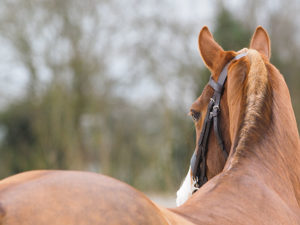The Link Between Osteochondrosis Lesions and Limb Forces
Wobbly legged foals might be able to walk within an hour of birth, but that doesn’t mean they’re experts at coordinated movement. In fact, a new study by Dutch and Belgian scientists suggests it can take several months for young horses to develop their gaits, with varying speed and impulse. And those gaits can show significant changes in peak force when the foal has osteochondral lesions.
“Although foals can stand and walk impressively fast, they do not move as ‘small adult horses,’” said Ben Gorissen, DVM, a PhD candidate in the Utrecht University Faculty of Veterinary Medicine Department of Pathobiology Division of Anatomy and Physiology, in the Netherlands. “In a very precocious animal such as the horse, gait development takes time.”
“Furthermore, our research shows that at the acute phase of the disease, osteochondrosis causes pain and, with that, a subclinical lameness, which can be diagnosed with objective gait analysis,” Gorissen said.
In their study, Gorissen and his fellow researchers measured the hoof pressures and forces applied by 11 Dutch Warmblood foals at the walk and the trot during their first 24 weeks of life. Handlers led the foals over pressure plates that detect peak vertical forces (the maximum downward force of the hoof when it strikes the ground), vertical impulses (vertical force related to the time the force lasts), and stance duration (how long the hoof stayed on the ground during each step). Because the foals were growing, the scientists “normalized” the measurements, meaning they used algorithms to adjust them according to the growing body mass
Create a free account with TheHorse.com to view this content.
TheHorse.com is home to thousands of free articles about horse health care. In order to access some of our exclusive free content, you must be signed into TheHorse.com.
Start your free account today!
Already have an account?
and continue reading.

Related Articles
Stay on top of the most recent Horse Health news with

















